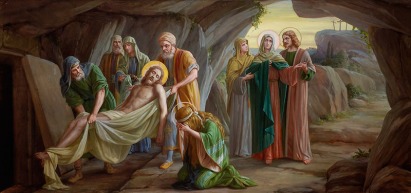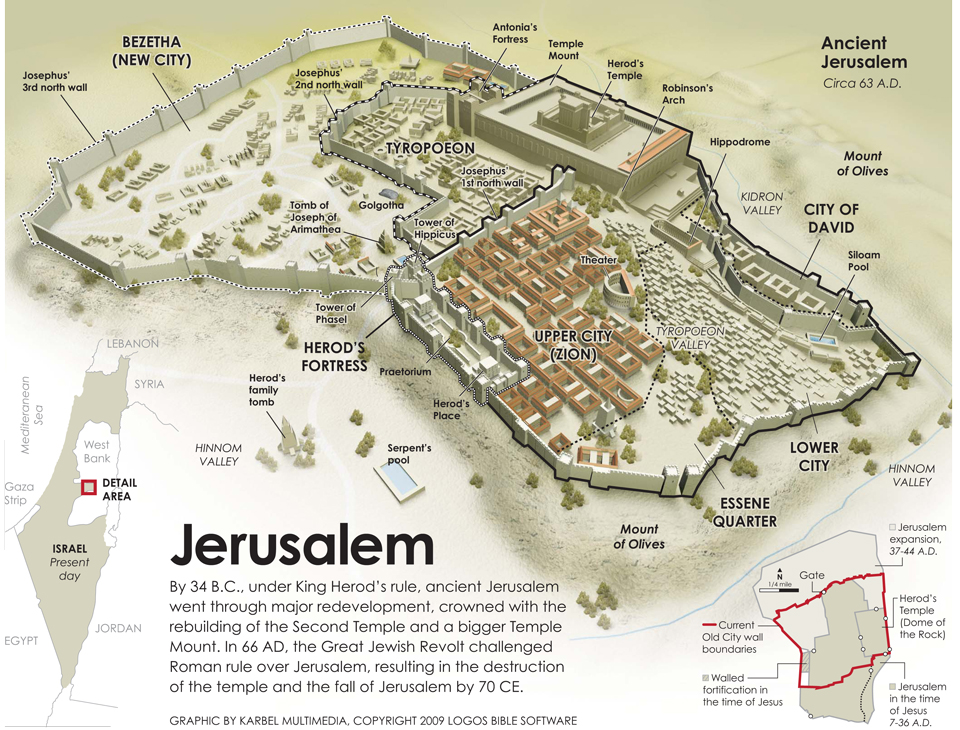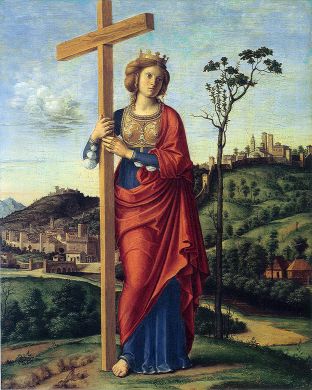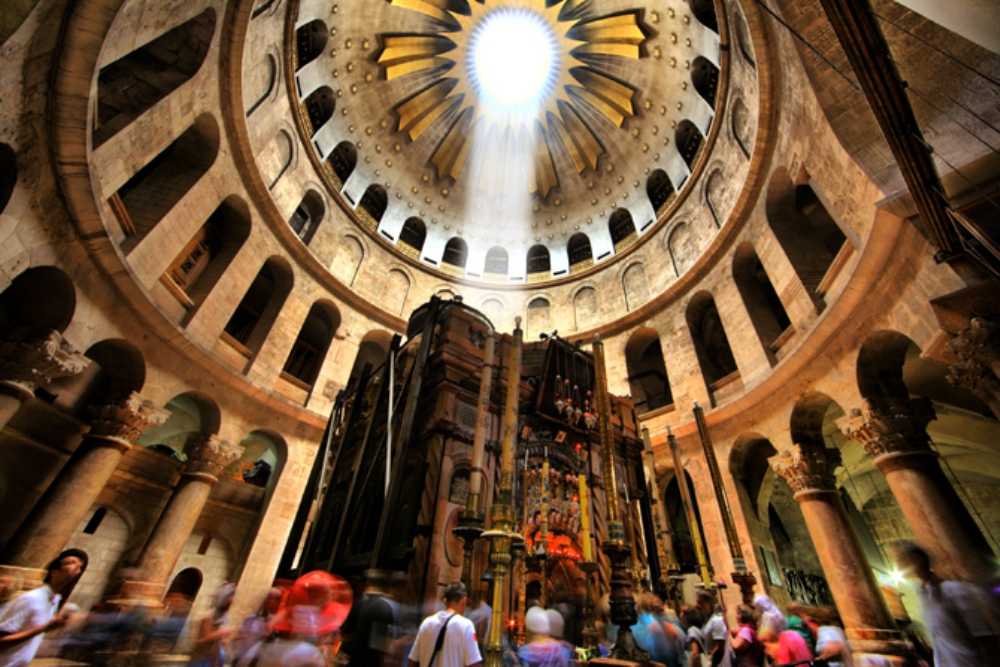☧
This place is simply incredible. I have no idea how I have gone so much time without knowing about the Church of the Holy Sepulchre, but I’m glad I have found out about it. The church is built on what is widely accepted to be the geographic location of the last four stations of the cross, the place where Christ was crucified and the place where he was entombed for three days, and where he arose, resurrected to conquer sin and death. It is, and has been for some 1700 years, the destination of countless religious pilgrims, including Pope Benedict XVI who had this to say:
Saint John’s Gospel has left us an evocative account of the visit of Peter and the Beloved Disciple to the empty tomb on Easter morning. Today, at a distance of some twenty centuries, Peter’s Successor, the Bishop of Rome, stands before that same empty tomb and contemplates the mystery of the Resurrection. Following in the footsteps of the Apostle, I wish to proclaim anew, to the men and women of our time, the Church’s firm faith that Jesus Christ “was crucified, died and was buried”, and that “on the third day he rose from the dead”. Exalted at the right hand of the Father, he has sent us his Spirit for the forgiveness of sins. Apart from him, whom God has made Lord and Christ, “there is no other name under heaven given to men by which we are to be saved” (Acts 4:12).
Alright, now let’s get into the logistical history of the church. Today, the Church of the Holy Sepulchre stands in the Christian quarter of the Old City of Jerusalem and shares its architecture with many other structures in that area. In Jesus’s time, this area was a rock quarry outside of the city walls. It was rugged terrain and it has been suggested that Calvary (the place Jesus was crucified) was a large pile of rejected rocks from the quarry. The bases of the heavy crucifixes could be easily held up by setting them into cracks between these massive rocks. CP theology: There could be, in my opinion, a parallel drawn between Psalms 118:22, which says, “The stone the builders rejected has become the cornerstone,” and this pile of rejected rocks. This represents the idea that what is insignificant to human beings has become great through divine election. The rejected stones became the site of the crucifixion of Jesus who was himself rejected by man.
Something that struck me as I was learning about this church was how near to one another are Calvary and the tomb – how can one church envelope those two locations? The answer goes back to the fact that this was a quarry. Miners at that time were removing sizable chunks of rock, so it makes sense that the people would lay their dead to rest in the “caves” left behind because the deceased were required to be entombed  outside of city walls. A religious pilgrim known as the Pilgrim of Bordeaux from Burdigala (present-day Bordeaux, France) who visited the site in 333 A.D. recalls, “On the left hand is the little hill of Golgotha where the Lord was crucified. About a stone’s throw from thence is a vault wherein his body was laid, and rose again on the third day.”
outside of city walls. A religious pilgrim known as the Pilgrim of Bordeaux from Burdigala (present-day Bordeaux, France) who visited the site in 333 A.D. recalls, “On the left hand is the little hill of Golgotha where the Lord was crucified. About a stone’s throw from thence is a vault wherein his body was laid, and rose again on the third day.”
Often, the site’s legitimacy is brought into question because, as it is today, the church is within the walls of Jerusalem, but in Scripture, it is stated that Golgotha is “near the city” (John 19:20), and “outside the city wall” (Hebrews 13:12). There are arguments and counter-arguments of all kinds, but there is overwhelming evidence that at the time of Jesus’s crucifixion, Golgotha was outside of the city walls and, as we will discuss later, the walls were moved outward after Jesus’s time. In fact, Dan Bahat, the former City Archaeologist of Jerusalem and Professor of Land of Israel Studies at Bar-Ilan University, stated that “six graves from the first century were found on the area of the Church of the Holy Sepulchre. That means, this place [was] outside of the city, without any doubt…” Shortly after Jesus’s death and resurrection, the walls of Jerusalem were expanded to the north by Agrippa I over a period between 40 and 60 A.D. This new wall is known as the third north wall of Jerusalem and the expansion placed within the city walls the site of the Holy Sepulchre as shown below.

In 66 A.D., there were elevated ethnic tensions between the Jews and Romans in Jerusalem. The Jewish people were upset about the Roman taxes levied against them so there were protests in the city. Some Romans were attacked, and in response, the Romans ransacked the Jewish temple, claiming their spoils as money owed to the Empire. This sparked further revolt by the Jews who attacked and overran the Roman garrison in the city. Soon after, the conflict escalated into full scale war and the city was besieged and taken by the Roman forces. In 70 A.D., the walls of Jerusalem, and most of the city itself, were destroyed by the military campaign of Titus, and over the next 60 years, the city would be contested by the Romans and the Jews. The city would remain in ruin until the 130s A.D. when Roman Emperor, Hadrian took initiative in rebuilding Jerusalem as a completely Roman city without any trace of Judaism. He called this city Aelia Capitolina. Hadrian banned Jews and Christians from the city and, in an effort to defile the holy Jewish sites, he built pagan temples over many locations important to the Jewish people including the Second Temple and the site of the Sepulchre (meaning “Tomb”, in Latin).
And so it sat. For about 200 years, the most holy site in the Christian faith was buried and covered by a pagan temple.
Eusebius, a bishop of the early Church wrote in his work, The Life of Constantine, that the site had originally been a Christian place of veneration, but that Hadrian had deliberately covered these Christian sites with earth, and built his own temple on top, due to his hatred for Christianity. Constantine is a topic for another time, but in short, he was the Emperor of Rome from 306 to 337 A.D. His mother, Saint Helena, was a lowborn Greek Christian and due to his mother’s faith, Constantine had a fondness for the Christians of the Empire. He legalized the faith throughout the Roman Empire in 311 A.D., and allowed his mother to promote Christianity by building churches on sites which were important to the life of Jesus – two of these such sites were Calvary and the Holy Sepulchre.
In 325 A.D., Constantine ordered the demolition of the pagan temple and the excavation of the soil that was used to make flat ground. A year later, Helena came to be part of the  excavation around the Sepulchre and during these digs, she is said to have found three crosses, one of which she believed could be the True Cross. To test her theory, she brought a woman who was leper before the crosses and asked her to touch each of them one at a time. After the leper touched the first two, nothing happened, but when she touched the last one, she was cured immediately. This miracle was enough proof for Helena that it was a holy site and further excavation gave discovery of the tomb which confirmed that the legend of the location of the Holy Sepulchre was true.
excavation around the Sepulchre and during these digs, she is said to have found three crosses, one of which she believed could be the True Cross. To test her theory, she brought a woman who was leper before the crosses and asked her to touch each of them one at a time. After the leper touched the first two, nothing happened, but when she touched the last one, she was cured immediately. This miracle was enough proof for Helena that it was a holy site and further excavation gave discovery of the tomb which confirmed that the legend of the location of the Holy Sepulchre was true.
Constantine’s church was built as two connected churches over the two different holy sites including a great basilica, an enclosed atrium with the traditional site of Calvary in one corner, and a rotunda which contained the remains of a rock-cut room that Helena identified as the burial site of Jesus. Our Pilgrim of Bordeaux makes his second appearance here by saying, “There, at present, by the command of the Emperor Constantine, has been built a basilica, that is to say, a church of wondrous beauty.” The  rock face around the tomb was removed in order to isolate the burial bed so that a shrine could be built around it. In the center of the rotunda, there is a small building called the Kouvouklion (Kουβούκλιον; Modern Greek for small compartment) or Aedicule (from aediculum, Latin for small building) which contains the burial bed. The actual bed had not been seen for centuries because it has been covered by a marble sheath for protection and until recently, no one actually knew what was underneath the marble. More discussion on this topic will come later.
rock face around the tomb was removed in order to isolate the burial bed so that a shrine could be built around it. In the center of the rotunda, there is a small building called the Kouvouklion (Kουβούκλιον; Modern Greek for small compartment) or Aedicule (from aediculum, Latin for small building) which contains the burial bed. The actual bed had not been seen for centuries because it has been covered by a marble sheath for protection and until recently, no one actually knew what was underneath the marble. More discussion on this topic will come later.
What followed for the Church of the Holy Sepulchre was centuries of conflict. The claim to the Holy Land is still contested even today; the church was rattled by battles, skirmishes, and wars, between Christians, Muslims, Jews, and even disputes within groups of Christians. This could be discussed at length, but it’s not terribly interesting and the important facts are that it was fought over, destroyed, and rebuilt a number of times. Fortunately for us, the site was preserved, and more importantly, the Holy Sepulchre remained untouched.
Now, for the “unveiling”. In October of 2016, researchers were given 60 hours to remove the marble sheath that covered the alleged location of the burial bed of the Holy Sepulchre and research the contents of the tomb. When they removed the marble, which is had remained unmoved since at least 1555, and most likely centuries earlier, a layer of fill dirt was exposed. This layer of dirt was lifted to reveal yet another marble slab, this one dark with a cross inscribed which is believed to date back to the First Crusade in 1099. The archaeologists then removed the second marble slab to reveal the original limestone burial bed which has remained intact and preserved for millennia. The image shows the dark marble slab and the exposed face of the burial bed. This video and article from National Geographic show the process of this incredible discovery. Again, we hear from former City Archaeologist of Jerusalem on this; he says, “We may not be absolutely certain that the site of the Holy Sepulchre Church is the site of Jesus’ burial, but we certainly have no other site that can lay a claim nearly as weighty, and we really have no reason to reject the authenticity of the site.”
to date back to the First Crusade in 1099. The archaeologists then removed the second marble slab to reveal the original limestone burial bed which has remained intact and preserved for millennia. The image shows the dark marble slab and the exposed face of the burial bed. This video and article from National Geographic show the process of this incredible discovery. Again, we hear from former City Archaeologist of Jerusalem on this; he says, “We may not be absolutely certain that the site of the Holy Sepulchre Church is the site of Jesus’ burial, but we certainly have no other site that can lay a claim nearly as weighty, and we really have no reason to reject the authenticity of the site.”
This exploration of the hidden contents of the tomb gives hope to the legend maintained by Christians for millennia and provides an opportunity for religious pilgrims from all over the world to come to the Holy Land and experience the visceral and physical realities that are so important to our faith. People often wonder why the maintenance of sites like this is held with such importance, and why people are so moved by their experience. The answer to this lies in the doctrine of the Catholic faith. Catholicism is a very physical religious practice – we engage in sacraments which are physical expressions of faith. When we adore the Blessed Sacrament in the monstrance, we are physically present with Jesus Christ; when we receive the host and chalice , we are physically consuming the Body and Blood, Soul and Divinity of our Lord, Jesus Christ. God revealed himself totally, and made himself known to us by physically sending his son to live among us, fully God and fully man, and to share in our humanity – to suffer among us. It is for this reason that traveling to the places, which are the root of our faith, is so important. When we are physically present in these places, we are more physically united with the Church, with God, and with Jesus Christ through the communion of the Holy Spirit. May we all have the opportunity to experience something as significant as the Church of the Holy Sepulchre.

That was a great article. Thank you Max Milan and may Dear Lord Jesus Christ Bless you.
LikeLike